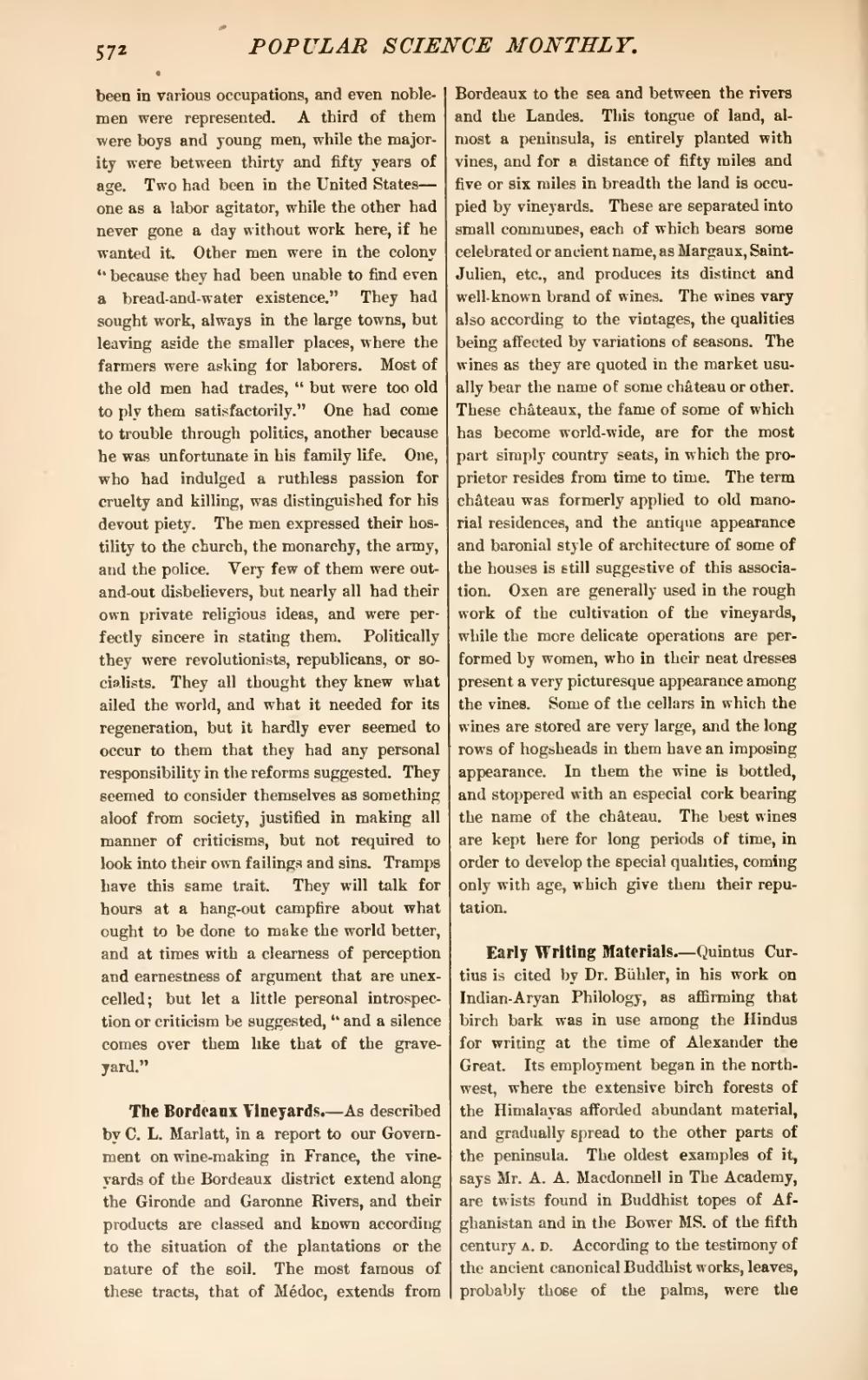been in various occupations, and even noblemen were represented. A third of them were boys and young men, while the majority were between thirty and fifty years of age. Two had been in the United States—one as a labor agitator, while the other had never gone a day without work here, if he wanted it. Other men were in the colony "because they had been unable to find even a bread-and-water existence." They had sought work, always in the large towns, but leaving aside the smaller places, where the farmers were asking for laborers. Most of the old men had trades, "but were too old to ply them satisfactorily." One had come to trouble through politics, another because he was unfortunate in his family life. One, who had indulged a ruthless passion for cruelty and killing, was distinguished for his devout piety. The men expressed their hostility to the church, the monarchy, the army, and the police. Very few of them were out-and-out disbelievers, but nearly all had their own private religious ideas, and were perfectly sincere in stating them. Politically they were revolutionists, republicans, or socialists. They all thought they knew what ailed the world, and what it needed for its regeneration, but it hardly ever seemed to occur to them that they had any personal responsibility in the reforms suggested. They seemed to consider themselves as something aloof from society, justified in making all manner of criticisms, but not required to look into their own failings and sins. Tramps have this same trait. They will talk for hours at a hang-out campfire about what ought to be done to make the world better, and at times with a clearness of perception and earnestness of argument that are unexcelled; but let a little personal introspection or criticism be suggested, "and a silence comes over them like that of the graveyard."
The Bordeaux Vineyards.—As described by C. L. Marlatt, in a report to our Government on wine-making in France, the vineyards of the Bordeaux district extend along the Gironde and Garonne Rivers, and their products are classed and known according to the situation of the plantations or the nature of the soil. The most famous of these tracts, that of Médoc, extends from Bordeaux to the sea and between the rivers and the Landes. This tongue of land, almost a peninsula, is entirely planted with vines, and for a distance of fifty miles and five or six miles in breadth the land is occupied by vineyards. These are separated into small communes, each of which bears some celebrated or ancient name, as Margaux, Saint-Julien, etc., and produces its distinct and well-known brand of wines. The wines vary also according to the vintages, the qualities being affected by variations of seasons. The wines as they are quoted in the market usually bear the name of some château or other. These châteaux, the fame of some of which has become world-wide, are for the most part simply country seats, in which the proprietor resides from time to time. The term château was formerly applied to old manorial residences, and the antique appearance and baronial style of architecture of some of the houses is still suggestive of this association. Oxen are generally used in the rough work of the cultivation of the vineyards, while the more delicate operations are performed by women, who in their neat dresses present a very picturesque appearance among the vines. Some of the cellars in which the wines are stored are very large, and the long rows of hogsheads in them have an imposing appearance. In them the wine is bottled, and stoppered with an especial cork bearing the name of the château. The best wines are kept here for long periods of time, in order to develop the special qualities, coming only with age, which give them their reputation.
Early Writing Materials.—Quintus Curtius is cited by Dr. Bühler, in his work on Indian-Aryan Philology, as affirming that birch bark was in use among the Hindus for writing at the time of Alexander the Great. Its employment began in the north-west, where the extensive birch forests of the Himalayas afforded abundant material, and gradually spread to the other parts of the peninsula. The oldest examples of it, says Mr. A. A. Macdonnell in The Academy, are twists found in Buddhist topes of Afghanistan and in the Bower MS. of the fifth century a. d. According to the testimony of the ancient canonical Buddhist works, leaves, probably those of the palms, were the
